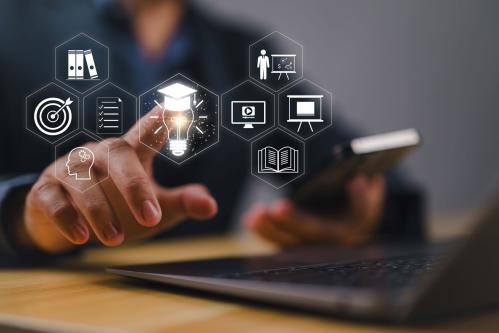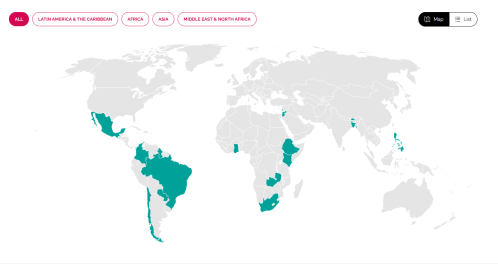Editor’s note: As part of the Skills for a Changing World project, this blog series explores opportunities for innovation in education to develop breadth of skills.
The importance of teachers cannot be overstated, and good teachers are often shown to be the most important factor in a child’s schooling—even more important than going to a good school. Ideally, teachers guide learning so that each student is active and engaged, they make learning relevant to students’ lives, and they foster the full breadth of skills young people need. But despite their important role of guiding students’ education, teachers are burdened with crowded classrooms, a range of administrative tasks, difficulty designing lessons, and finding content. They are expected to be experts in academic subjects, child development and pedagogy, adept at managing a classroom and discipline, along with collecting data and carrying out administrative duties. In many places, teachers have to wait months for their paychecks and are forced to hold multiple jobs to make ends meet.
What can be done to unburden teachers? Our ongoing research has revealed there are many innovations helping to support teachers, like developing technology to ease teachers’ burdens, leveraging community members to take tasks off teachers’ plates, or utilizing innovative teacher training models that foster collaboration and peer learning.
Crucially, many of these innovations can help give teachers the space, tools, and support to facilitate active hands-on, minds-on learning with their students. For example, technology is helping teachers to focus on personalized instruction and relieve them of administrative tasks. Often teachers are limited by large classes and varying ability, making it challenging to provide individual practice for students to apply what they are learning. But recent advancements in technology are allowing higher levels of personalization, with activities and games on mobiles, tablets, and computers adapting to students’ individual levels and providing ample practice of what they are learning. These applications generate instant data on student progress, what they’re learning, and how long it takes them to progress through each learning module, relieving teachers of the need to spend hours and hours grading problem sets.
Pixatel is one such tool being applied in low-resource settings in India. It utilizes tablets to provide math activities that teachers can pair with their lessons to give students individualized and engaging practice while assessing their learning levels. While results are still waiting a rigorous evaluation, preliminary reports from teachers showed that students were more engaged and for longer amounts of time, and that girls and the weakest students have benefitted the most.
Another example is the African School for Excellence in South Africa, which has utilized technology to implement a rotational classroom model. There, classes are split into small groups and students rotate between teacher-facilitated lessons, small group, peer-learning activities, and individual work on computers. This model places a premium on self-directed learning among students, giving teachers the tools to act as facilitators rather than lecturers. This model, which costs just 60 percent per student of what traditional government secondary schools spend, uses technology to help teachers more effectively teach large classes.
In other situations schools are leveraging community members rather than technology to unburden teachers. For example, Pratham’s Read India program, one of our Millions Learning case studies, focuses on personalized remedial instruction in math and literacy for those students who are farthest behind. In many places the interactive and group-based “Teaching at the Right Level” modules have been facilitated by trained community volunteers who act as tutoring support helping teachers meet the particular needs of struggling students. This has been an effective way of personalizing learning without burdening teachers with additional lessons or after-hours sessions. Similar models of tapping community volunteers to help teachers on specific tasks have been employed to teach entrepreneurship and business skills in Uganda and Rwanda by Educate! and in Jordan by INJAZ, also Millions Learning case studies which have successfully scaled up.
Finally, our research has revealed a number of education innovations that elevate and support teachers through collaborations and peer-learning professional development. Often teacher training reinforces a teacher-centered model of lecturing rather than encouraging the social nature of teaching and a hands-on, minds-on learning environment. STIR Education is a new model in India and Uganda that identifies highly motivated teachers and offers them small grants to implement innovative ideas in their classrooms. They have found that the real value in their model, however, comes from connecting teachers to each other and forming collaborative networks where they can visit and learn from one another. Similarly Edmodo, a free online platform that functions as a social network for teachers, has seen much success by capitalizing on the social nature of teaching and connecting teachers around the world to one another.
These innovative models hold much promise for supporting overburdened teachers all over the world, and show a variety of contexts and approaches that aim to improve teaching. Ultimately, whatever approach is used—and there certainly is a range—the goal should be to create an educational experience that cultivates the breadth of skills students need for life and work and where teachers feel supported and respected in their roles.



Commentary
Innovating to unburden teachers
July 22, 2016